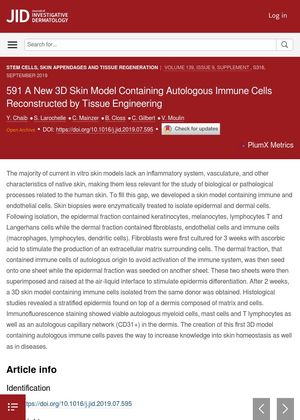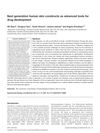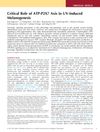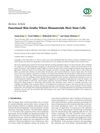A New 3D Skin Model Containing Autologous Immune Cells Reconstructed by Tissue Engineering
September 2019
in “
Journal of Investigative Dermatology
”

TLDR Researchers developed a 3D skin model with its own immune and blood vessel cells to better understand skin health and disease.
In 2019, researchers developed a 3D skin model that included immune and endothelial cells, addressing the lack of these elements in most in vitro skin models. The model was created by enzymatically treating skin biopsies to isolate epidermal and dermal cells. The epidermal fraction contained keratinocytes, melanocytes, lymphocytes T and Langerhans cells, while the dermal fraction contained fibroblasts, endothelial cells, and immune cells. Fibroblasts were cultured for 3 weeks with ascorbic acid to stimulate the production of an extracellular matrix. The dermal and epidermal fractions were then seeded onto separate sheets, superimposed, and raised at the air-liquid interface to stimulate epidermis differentiation. After 2 weeks, a 3D skin model containing immune cells from the same donor was obtained. Histological studies showed a stratified epidermis on top of a dermis composed of matrix and cells. The model also contained viable autologous myeloid cells, mast cells, T lymphocytes, and an autologous capillary network in the dermis. This model could enhance understanding of skin homeostasis and diseases.




